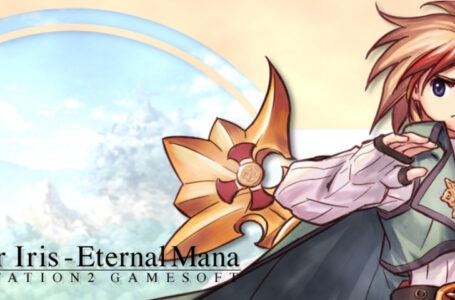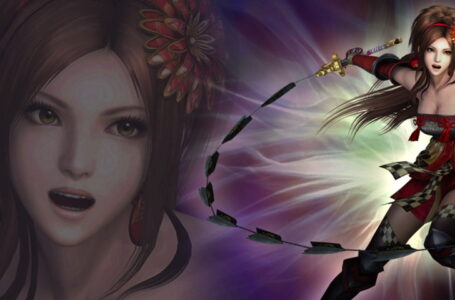Atelier Iris: Eternal Mana – the craft of combat
Now we’ve explored how Atelier Iris handles the series’ core concept of using alchemy and other crafting techniques to create items, it’s time to look at the other aspects of the game.
While all of the previous Atelier games featured strong RPG-style elements such as combat and exploration, for the most part — fourth game Atelier Judie was an exception to a certain extent — these were expressed in the abstract, with the emphasis being placed firmly on the main character and their workshop. That’s where the name came from, after all.
Atelier Iris: Eternal Mana seemingly saw the series take a bit of a sidestep into more traditional RPG territory. But there are a lot of things about it that make it stand out from what you might traditionally think of as a turn-based, menu-driven console RPG. So that’s what we’re going to look at in the next couple of articles.
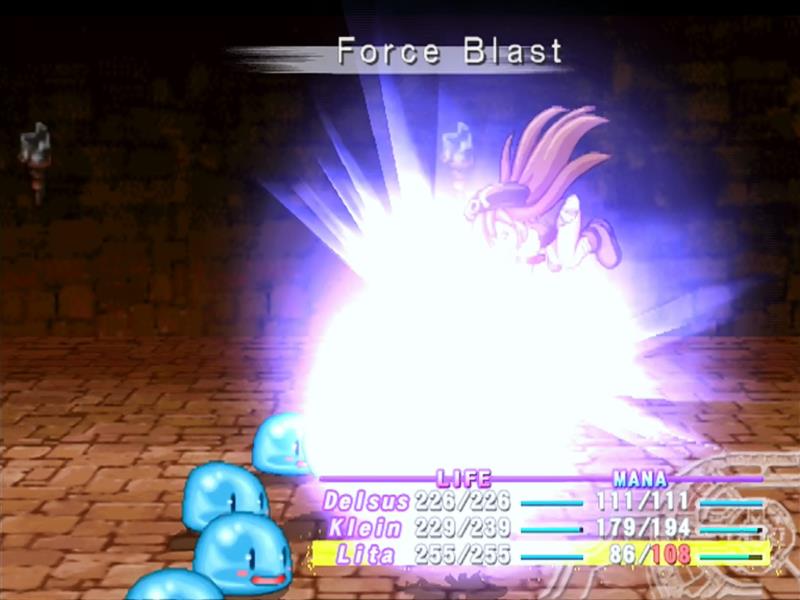
Before we get into those distinctive factors, let’s start by acknowledging the areas where Atelier Iris: Eternal Mana follows the conventions of the genre, and how those elements are implemented into the game structure as a whole.
There are a few reasons Atelier Iris: Eternal Mana is regarded as more of a “traditional” RPG than its predecessors and successors in the series. Firstly and perhaps most simply is the fact that it eschews the series’ traditional female protagonist in favour of a male lead — though there is also a prominent female lead who is arguably more important to the overall main narrative. We’ll talk more about both of them when we examine the story itself in more detail.
Secondly is that main narrative: like in most console RPGs, this is a rigidly linear affair that you proceed through episodically. If you were to ignore all the side activities — of which there are many, and we’ll talk about those in detail next time — then you could probably power through Atelier Iris: Eternal Mana pretty quickly and without having to make any meaningful decisions along the way. If you were to do so, you would be missing the point somewhat, but it is an option.
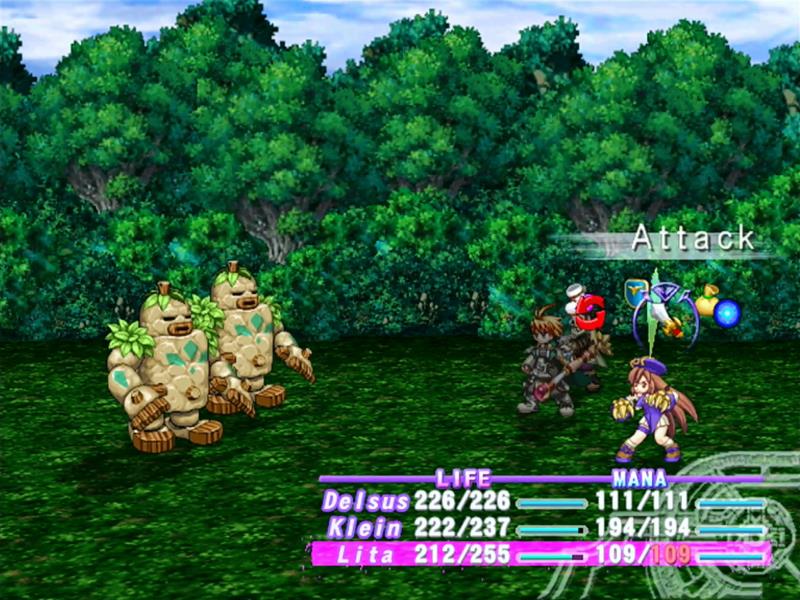
Thirdly is the combat system which, for the most part, unfolds as you would expect for a turn-based, menu-driven console RPG. But this is where we start to see a few twists, so let’s look at that in more detail first.
Atelier Iris: Eternal Mana hails from an age where we still had random, invisible encounters while exploring field areas. These haven’t completely gone away today — they’re mostly found in dungeon crawlers these days — but a lot of console RPG specialists, including Gust themselves, now favour a “symbol attack” system, where individual enemies representing a party of foes wander field areas, allowing you the choice of avoiding them or confronting them, and often presenting you the opportunity to enjoy a surprise attack opportunity or suffer an ambush based on player skill rather than character agility statistics.
Nope; Atelier Iris: Eternal Mana is old-school “wander around, screen goes swirly, time for a fight on a separate screen” at its finest, though it does at least have the foresight to reduce or even eliminate enemy encounters altogether in areas that require you to solve puzzles or engage in feats of dexterity such as platforming.
Sadly, it lacks the excellent system seen in Gust’s other games such as Ar Tonelico, where you can actually defeat all the enemies in an area by depleting a meter a little with each battle, leaving you free to explore after a certain number of successful encounters — that was introduced in Atelier Iris 2: The Azoth of Destiny. But on the flipside, there are unlockable abilities throughout the game that allow you to manipulate the encounter rate somewhat.
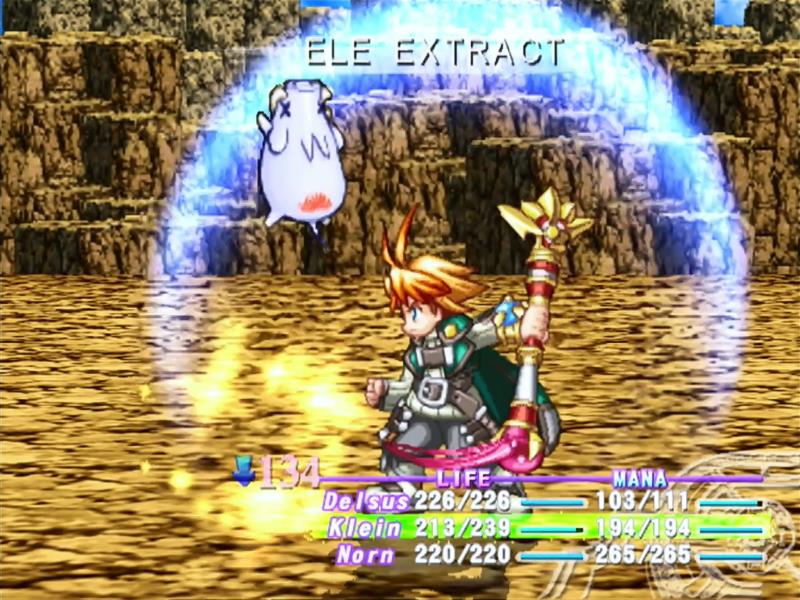
Once combat starts, the three party members you have defined as your “front row” enter battle, and from here turns unfold according to invisible initiative rolls based on player character and enemy agility stats. Unlike in later Atelier games, there’s no bar indicating turn order in this one, so you’ll have to rely on luck, study enemy patterns and how they relate to your characters’ performance, or manipulate your characters’ statistics through skills and items in order to predict who is going to go next.
On a character’s turn, they have the usual options you might expect from a turn-based, menu-driven RPG of this type. They can attack, they can defend, they can use a skill (which costs mana), they can attempt to flee, or they can use an item.
Basic attacks have an area of effect according to the character’s weapon. Lita’s claws slash in a wide arc, for example, so she is able to hit and damage a group of enemies spread over a reasonably wide area, while Arlin’s fencing sword means that he is focused on dealing heavy damage to a single target. Some characters’ basic attacks have special effects, too; Norn, for example, can damage opponents’ mana as well as life points, while protagonist Klein will extract the elemental energy from opponents he lands the finishing blow on.
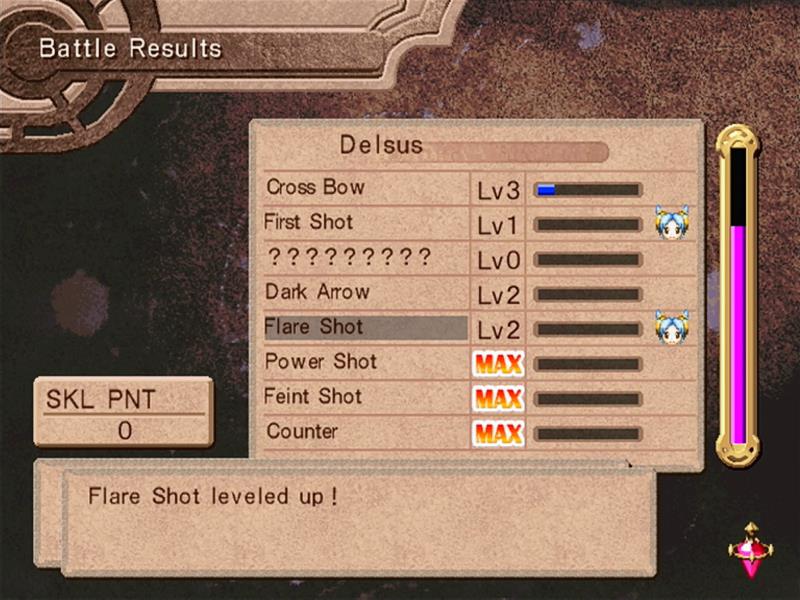
The skills are where things get a bit interesting. In most turn-based, menu-driven RPGs, we’re accustomed to skills going off immediately after we make use of them, but that’s not always the case here. Specifically, in Atelier Iris some skills either have multiple parts to their use (such as chanting a spell, then unleashing it) that unfold in succession, or simply trigger their effect a little later than when you actually give the order.
In some cases, the initial use of a skill can cause the user to disappear from the screen until the effect triggers, making them invulnerable to attack while they’re elsewhere; a good example of this is Lita’s Stone Blast/Rock Smash/Meteor Strike skill, where she jumps off the screen to “find a stone”, then a few turns later returns with said stone to slam it down on your opponents’ heads.
Other multi-part skills like this are vulnerable to interruption, however. Being hit with sufficient damage, a critical hit or a knockback attack carries the risk of “Skill Break”, which wastes the time you’ve spent “charging” the skill; fortunately, you can also do this to enemies, and should take every opportunity to do so. Skills that are vulnerable to Skill break are often quite powerful; a good example is Norn’s “Turn 2 Candy” spell, which effectively acts as an almost-instant death spell, turning a single enemy into some sort of sweet treat.
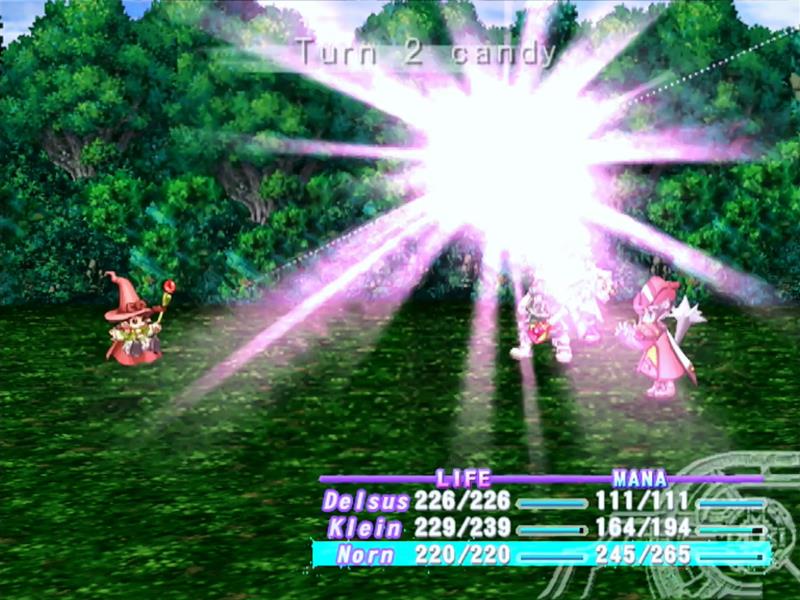
Klein adds a few more interesting twists to the mix through his ability to use mana items. Unlike some Atelier games where only the protagonist is able to use items, anyone can use basic items bought or crafted in shops, but Klein has the exclusive right to use the items he has created through alchemy. These run the gamut from simple healing salves to attack items with varied elemental effects and spectacular spell-style pyrotechnics.
If you’ve remembered to keep Klein well-stocked with these mana items ahead of time, he has a number of skills that allow him to manipulate their use somewhat by increasing their area of effect, boosting their power or deliberately delaying their activation. Making good use of these skills has the potential to make Klein both the best healer and the heaviest burst damage dealer in the game — though his slow speed in comparison to his peers makes up for his high overall level of power and flexibility.
Alternatively, if Klein is out of a particular mana item but has enough elemental energy stocked up to craft a new one, he can actually create it during battle and immediately use it — though doing this prevents you from boosting its power or area of effect, so it should be a last resort. It does allow for the odd clutch heal, quick buff or bit of extra damage when required, though.
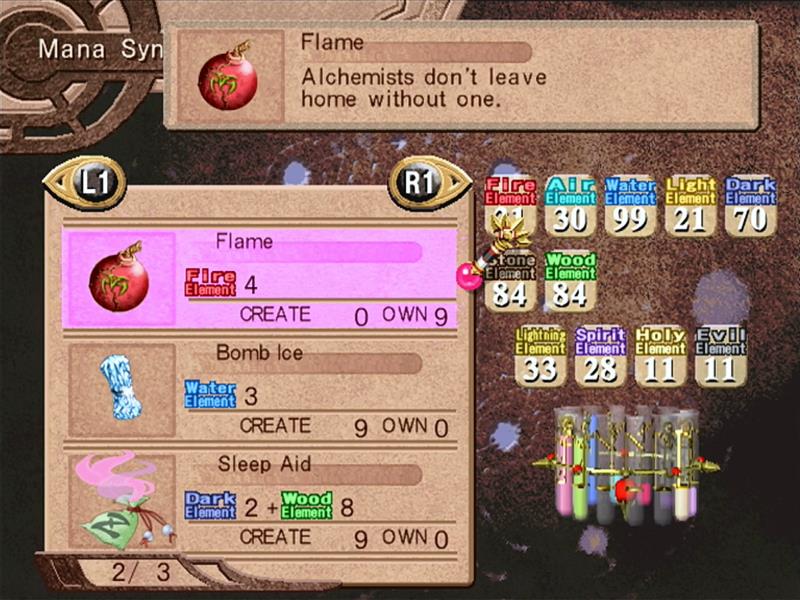
To keep things interesting, enemies in Atelier Iris: Eternal Mana have very strongly defined strengths and weaknesses, to the degree that ghost-type enemies cannot be hit with physical attacks at all, and numerous others are strongly resistant to certain types of damage or skills.
The upshot of this is that you can’t just rely on a single party of favoured characters in Atelier Iris: Eternal Mana; instead, everyone has a use at various times, and with this in mind you’re able to freely switch a front-line character for a back-row reserve character, Final Fantasy X-style. This means you can do cheeky tricks like putting characters who have a chance to break the normal turn order and always go first in the front row, then immediately swap them out for someone who is perhaps better equipped to deal damage in the current situation.
Characters mostly distinguish themselves through their skills, which is where Atelier Iris: Eternal Mana’s progression system comes in. There are several components of this, each of which must be engaged with if you want to get the best out of all your characters.
Most simply, there’s a conventional experience points and levels system, with the fairly common twist that characters in the back row get half the experience of those in the front, and whoever lands the finishing blow gets an extra 10% bonus. Gain enough experience to increase in level, and your stats will increase a little bit. This has an impact on your character’s overall level of power, but there are ways to influence this much more effectively and substantially.
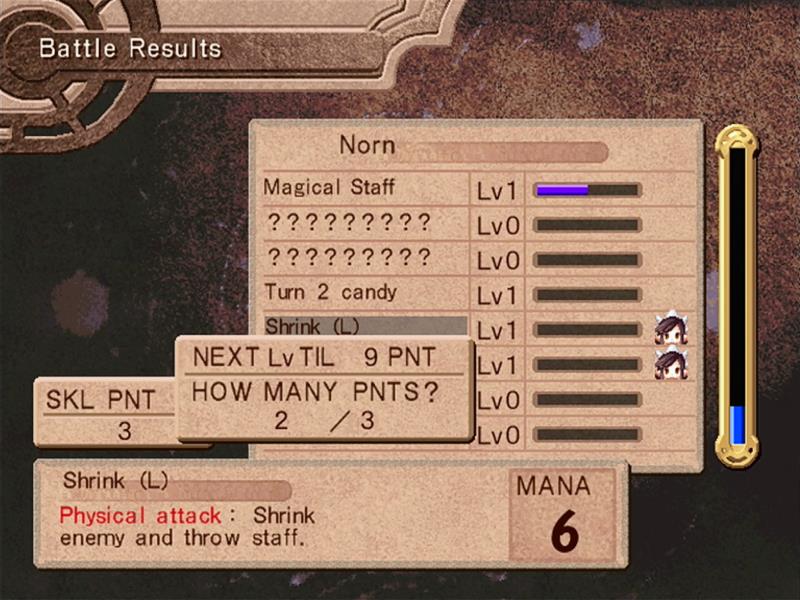
The first of these is the skill system, which ties in with levelling. Upon levelling up, you obtain three skill points, which can be invested in any of the skills the character currently has access to. These gradually unlock at various level boundaries or, in some cases, as a result of certain events.
In all cases, the first of these skills relates to the character’s basic attack action, and in several cases improving this not only increases its damage, but also in some cases adds or increases additional effects. Improving Norn’s staff attack action allows her to drain mana from her enemies, for example.
The other skills provide a combination of actions you can trigger in battle, which cost mana to use, and passive skills that are always active. These are thematically appropriate for the character in question; as the most magically-inclined, both Klein and Norn are able to develop natural magic resistance, for example, while Arlin’s agile sword combat is reflected by a passive skill that allows him to strike first regardless of initiative rolls.
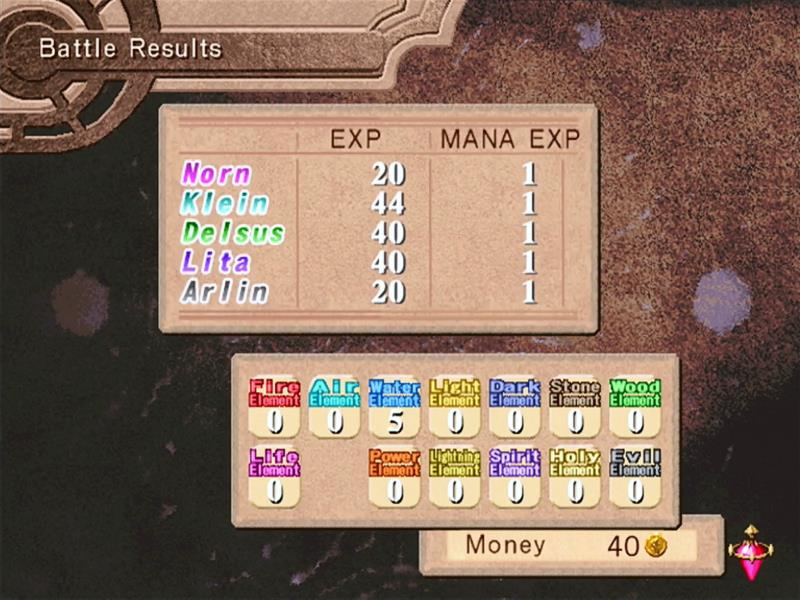
Just putting a few skill points into a skill doesn’t have an immediate impact, however; you need to invest enough points to level it up. In the early game, this feels like it might take quite a while, but it’s not long before you unlock another progression-related system that ties in with advancing your skills: capital-M Mana.
In the world of Atelier Iris: Eternal Mana, capital-M Mana are creatures that embody the various elements, and alchemists distinguish themselves by being able to communicate and cooperate with these beings. It is Mana that allow Klein to craft his mana items; it is Mana that allows him to make use of various special abilities while exploring; and, most importantly for what we’re concerned with right now, it is Mana that allow both Klein and his friends to increase their skills more rapidly.
Each character can be “equipped” with one of the Mana Klein has formed an agreement with. At its most basic level, this provides various thematically appropriate stat boosts — a fire Mana will improve a character’s fire resistance, among other things, for example. But more importantly, each Mana is also associated with two skills per character, and this allows them to progress more quickly.
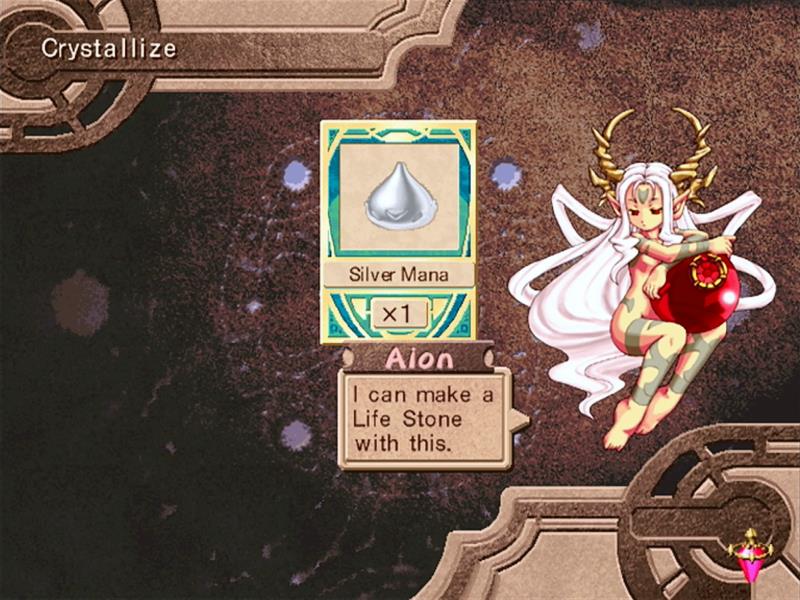
Once a character has a Mana equipped, they not only earn conventional experience points during battle, they also earn Mana experience, which gradually fills a bar on the skill progression screen. When this fills completely, the two skills that the Mana is attached to acquire some “free” points separately from the points you invest on a regular level up. In this way, you can choose which of your characters’ skills you would like to develop most quickly by equipping them with the appropriate Mana and supplementing that with the skill points you acquire when levelling up.
Mana have another function, too, which unlocks partway through the game. Stumbling into a fairy workshop as part of the main plot allows Klein to learn the secrets of augmenting weaponry using crystallised mana energy and the cooperation of friendly Mana. Once this option is available to you, stopping by Klein and company’s home base and making use of a magical anvil allows you to crystallise the mana energy found in various coloured mana droplets you find around the world, fuse these mana crystals together to produce helpful combinations of passive bonuses, and finally attach them to compatible weapons and accessories.
There are various colours of mana droplet, and each one has a Mana that particularly specialises in drawing out that colour’s energy. You don’t have to use that Mana if you don’t want to, however; it may be that you prefer the ability that another Mana crystallises from a particular colour — the “specialist” Mana simply crystallises a slightly more powerful crystal than a “non-specialist”, but this difference can be mitigated with a single fusion.
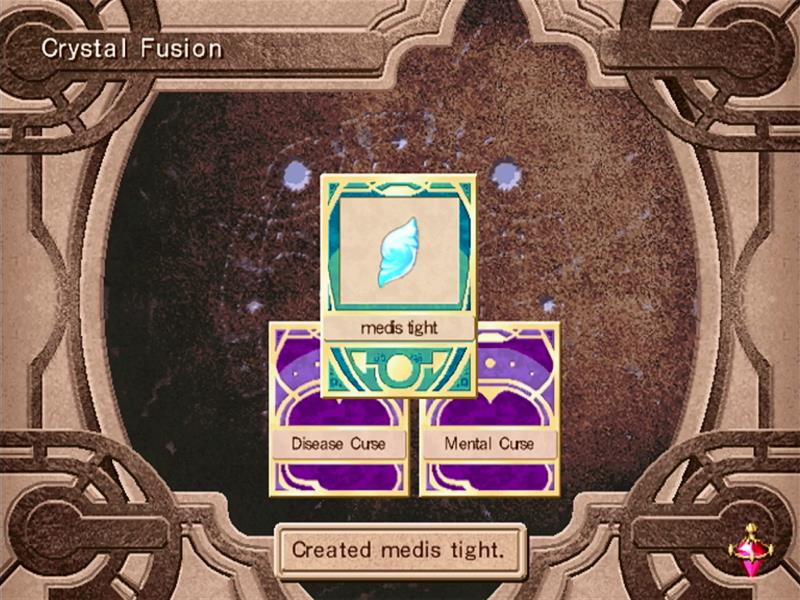
Fusion involves taking two mana crystals and combining their effects. Identical effects will stack and increase in power, while certain combinations of effects result in unique, named passive bonuses that tend to be significantly more powerful. It’s possible to mix up to three effects on a single mana crystal, providing a great deal of opportunity for customisation — though naturally the theorycrafters of the Internet determined what the “best” combination is long ago, so if you’re too lazy for trial, error and research, you can look it up.
This system is interesting but it feels oddly underused for much of the game; only certain weapons and accessories can be customised, and these tend to have fairly low base stats. As such, outside of the early game, it often feels like you make a more significant difference to your overall power level by simply buying stronger, non-customisable weapons.
This changes somewhat when you figure out some of the more powerful combinations of effects that result in the special named bonuses, but up until you figure that side of things out (or hit up GameFAQS) it’s easy to see how some players might end up ignoring this system completely; the game as a whole isn’t super-difficult for the most part, so it’s not until some of the late game optional content that you really need to engage with this side of things in order to make life a bit easier for yourself.
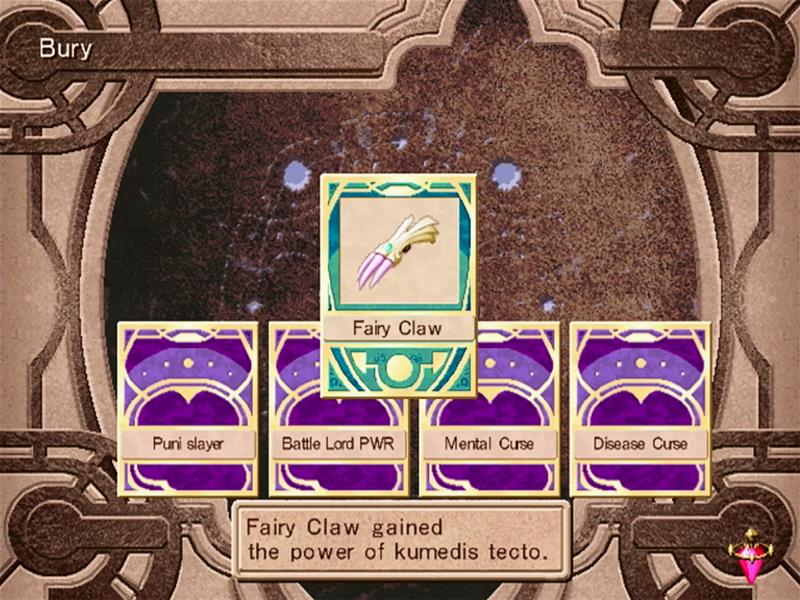
In many ways, a fair bit of Atelier Iris: Eternal Mana feels somewhat like a proof of concept and an experiment for Gust; as we saw earlier, there are elements of the various crafting systems — such as the “reviews” — that are hard to understand the purpose of, too, and neither the game itself nor its manual provide much in the way of insight, which is a bit of a shame.
For those who enjoy fiddling around with interesting systems and seeing what happens, though, there’s a lot to play with here — and you can have some very noticeable effects on your characters’ capabilities if you’re willing to put the time in to experiment a bit. For those who prefer to engage a bit more casually, though, you can safely ignore the parts that don’t seem to make much sense for the most part.
I guess this is probably a fairly optimal way of doing things, thinking about it; it provides a good range of accessibility and caters to multiple play styles, specifically rewarding those willing to delve a little deeper without making the game impossible for those playing more casually. And even those more casual players get to enjoy the robust basic mechanics of crafting, gathering and combat — all of which will almost certainly be expanded and explored further in the subsequent Atelier Iris games.
Next time, we’ll look specifically at the exploration aspect of Atelier Iris: Eternal Mana, and how its overall structure differs somewhat from the norm for turn-based, menu-driven console RPGs. For now, though, I have a commission to build a Chronolex and I’m a little behind schedule, so if you’ll excuse me…
Editorial note: the articles in The Complete Guide to Atelier were originally published on Editor Pete’s personal website. Because Atelier is eternal, we’re republishing them here to bring them to a wider audience and perhaps to introduce some folks to entries in the series they may not have previously encountered.
Join The Discussion
Rice Digital Discord
Rice Digital Twitter
Rice Digital Facebook
Or write us a letter for the Rice Digital Friday Letters Page by clicking here!
Disclosure: Some links in this article may be affiliate links, which means we may earn a small commission if you make a purchase after clicking on them. This is at no additional cost to you and helps support Rice Digital!
- Letter from the Editor: passing the torch - June 30, 2023
- Super Woden GP 2 is looking promising - June 30, 2023
- Inti Creates is making a 32 bit-style Love Live action platformer - June 26, 2023





